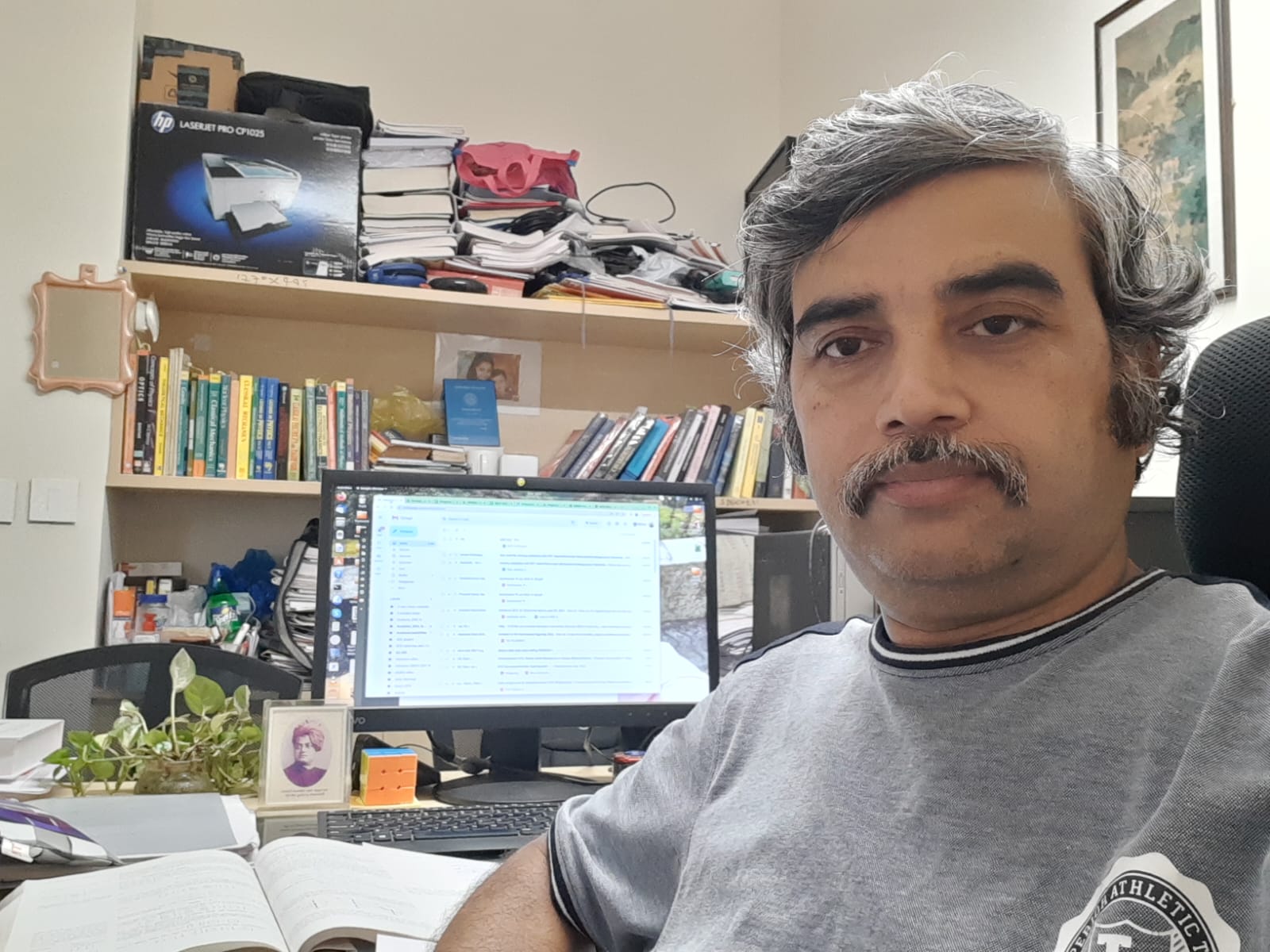A. Quantum Mechanics I (PHY F242)
Course description
This course will provide the basic grounding in Quantum Mechanics for the undergraduate students. Topics to be covered in this course are (i) Fundamental concept (Hilbert space, Bra, Ket vectors, Operators, uncertainty relations, Wave functions), (ii) Quantum Dynamics (Time evolution of wave function, the Schrodinger vs Heisenberg picture, SHO), (iii) Angular Momemtum (Rotations and angular momentum commutations relation, spin 1/2 system, eigen values and eigenstates of angular momentum, orbital angular momemtum, angular momentum addition), (iv) Symmetry in quantum mechanics (symmetries, conservation laws and degeneracies, discrete symmetries etc), (v) Time-Independent perturbation theory, non-degenerate and degenerate cases, Stark effect and Zeeman effect. (vi) Variational principle and its application.
Text Books:
TB1: Introduction to Quantum Mechanics, D. J. Griffith, 2nd Edition, Pearson Education.
Reference Books:
RB1: Modern Quantum Mechanics, J. J. Sakurai, Pearson Education, Twelfth Impression, 2013.
RB2: Quantum Physics, S. Gasiorowicz, Wiley 1974.
Student corner:
Few interesting videos -
1. Can machine think? R. Feynman (
click)
2. Knowing versus understanding. R. feynman (
click)
3. Secret of Concentration. Swami Sarvapriyananda (
click)
4. Positive psychology. Seligman (
click)
5. Secret of happiness. Mihaly Csikszentmihalyi (
click)
List of SOP/LOP/CP project problems:
Students interested in doing SOP, CP or LOP can send his/her one page CV to me at pdas@goa.bits-pilani.ac.in. See below the list of problems that you may work on.
Specific Project problems:
1. Machine Learning and Neutron star Equation of State
2. Deep learning for gravitational wave forecasting of neutron star mergers
3. Bose-Einstein condensation through machine learning
4. Machine Learning for the solution of Schrodinger Equation
5. Convolutional Neural Network and direct detection of dark matter
6. Dark Matter and Galaxy Rotation curve - A ML approach.
7. Machine Learning Applied to the Reionization History of the Universe in the 21 cm Signal
8. Quantum Potential prediction using Deep Neural Network
9. A ML approach in Stock-market prediction
10. The role of Artificial Intelligence(AI) in High Energy Physics, Astro(particle)physics and Cosmology (open problem)
Broad areas of Student's projects - Astronomy & Astrophysics, Cosmology & High Energy Physics
1. The cradle of life: Astro-biology
2. Extraterrestrial Intelligence
3. Cosmology expansion rate measurement
4. Nature of Dark Matter
5. Cosmology(acceleration) with Dark Energy
6. Gravitational lensing
7. Gravitational wave in Astronomy
8. Hydrogen-I science in cosmology
9. Re-ionization problem
10. Transient universe
11. Supernovae and its remnants
12. Pulsar science
13. Angular momentum in cosmology
14. Galaxy formation and Dark Matter
15. Radio-Astronomy
16. The world as viewed by HST
17. The role of AI in the search of New Physics
Computer Projects
1. GEAS(General Education Astronomy Source) project
UG Thesis problems:
High Energy Physics:
After the discovery of Higgs particle (also known as GOD particle) at Large Hadron Collider@CERN on 4th July,2012, the next question now people are asking: what's next? Is there anything beyond the Standard Model of Particle Physics? Is there any kind of New Physics. If yes, how it looks like and how to probe this. Can one test these ideas in high energy colliders e.g. proton-proton Large Hadron Collider, electron-positron Linear Collider?
Problem: Searching for New Physics signatures at high energy electron - positron linear collider.
Prerequisites: Understanding of Special Relativity, Quantum Mechanics and familiarity with the basics of Particle Physics.
Astrophysics:
In 1987 the core collapse supernova (SN1987A) was observed in a nearby galaxy called the Large Magellanic Cloud. The total energy emitted in SN1987A explosion was larger than that by 10 billion Suns. The kinetic energy of the explosion carries about 1% of the gravitational binding energy of about ergs and the remaining 99% going into neutrinos.
Now the numerical neutrino light curves can be compared with the SN1987A data where the measured energies are found to be “too low”.It is remain unclear whether this anomaly is due to a statistical problem or whether there is some New Physics.
Problem: Constraining new physics from supernova, relic density constraint
Prerequisites: Special Relativity, Quantum Mechanics, Particle Physics. Some familiarity with Quantum Field Theory may be useful.
- To know more about my research work and my group, click here.
Semester 2, 2021-2022
- Students who are interested to work on project problems in Semester 2, 2021-22, are requested to fill the google form (click here) on or before 20th November 2021.
- List of students selected for Project type course- Semester II, 2021-22 (click here) (NEW)
Semester 1, 2021-2022
NEW: List of students who may work under my supervision in Semester 1, 2021-22 after getting registered into project type courses is available here.


 An Institute of Eminence
An Institute of Eminence







